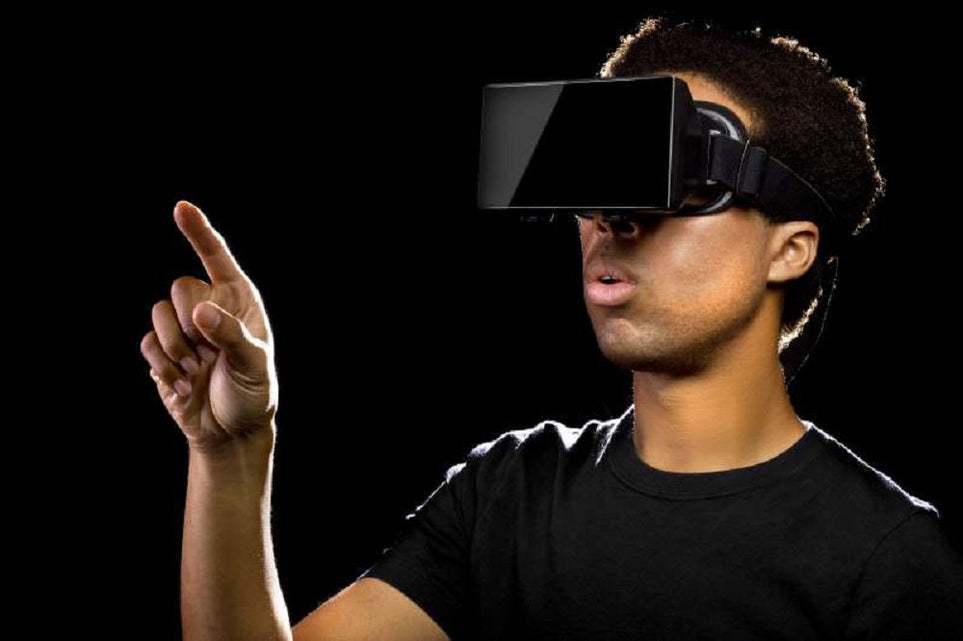If current trends are any indication of the future, virtual reality is set to change the way we create and consume media.
VR has raised the level of the gaming industry, given new life to social media platforms, and is rocking the adult industry. With this in mind, it’s important that we know the best products to use when the VR revolution explodes into the mainstream.
Over the past few years, there’s been a considerable buzz about a number of VR headsets. And with VR tech being a growing field, it can be difficult to track which sets will be popular in the future, and which will fizzle.
Here are the ten devices we believe will likely dominate the future of VR hardware.
VR Headset Oculus Rift
Of course, we have to include the device that paved the way for all this hype. Invented by Palmer Luckey, the Rift, set to be available in the first quarter of 2016, is a mainstay of wearable VR. It’ll give you crisp and immersive visuals, with 2160 by 1200 resolution thanks to two OLED screens, a field of view of 100 degrees, and uses LEDs to track head movement. You’ll be able to play XBox One, Oculus VR, and PC games, all with the XBox controller shipping with the device. And according to folks across the net, you’ll be able to get the whole package for under $400.
Check out Tested’s video getting into the nitty-gritty of the Rift experience.
Sony Project Morpheus
Of course, we have to include the device that paved the way for all this hype. Invented by Palmer Luckey, the Rift, set to be available in the first quarter of 2016, is a mainstay of wearable VR. It’ll give you crisp and immersive visuals, with 2160 by 1200 resolution thanks to two OLED screens, a field of view of 100 degrees, and uses LEDs to track head movement. You’ll be able to play XBox One, Oculus VR, and PC games, all with the XBox controller shipping with the device. And according to folks across the net, you’ll be able to get the whole package for under $400.
Check out Tested’s video getting into the nitty-gritty of the Rift experience.
HTC Vive
The Vive is a really promising piece of tech, especially for gamers who’ve spent an infinite number of hours on Valve. This headset was born as a partnership between mobile developer HTC and gaming giant Valve and looks to be an excellently immersive experience. It sports two 1080 by 1200 screens, responds to your movement via sensors on a wall and haptic hand controllers, and has 70 sensors, making it realistically responsive. It’s ready for 4K Ultra HD too, for your gaming pleasure, and people have said it’s roomier than its competitors, making eyeglasses a non-issue. It’s a purportedly expensive headset, but I’m guessing it’ll be a great seller for its release in late 2015.
GameSpot reviews the Vive in the video below, and blasts its competitors, demonstrating the Vive doesn’t cause motion sickness at all.
Samsung Gear VR
If the Rift is too intense for you, try out the Gear, the smartphone-using love child of Oculus and Samsung. It has a smaller field of vision than many of its competitors and has no positional tracking hardware (still 2560 by 1440 resolution), but it’s pretty affordable at $199 and you can enjoy full use of the Oculus store. The Gear is compatible with the Galaxy Note 4, S6, and S6 Edge, so no iPhone users allowed. Although the headset’s not that too expensive, Samsung’s GamePad platform is a bit pricey, but there’s always Oculus software. And you’ll only have to wait till this holiday season to get it.
Here’s a lengthy but fun video of Tested playing with the Gear.
Google Cardboard
Even though the Cardboard seemed kind of a silly venture, it actually became very popular, as it’s a very affordable way to test out VR. The price runs from a free developer kit download to a whopping $85 and converts your Android phone into a pretty solid VR experience. Sure, it’s made of cardboard, but it’s cheap and only requires tech that you likely already possess. Imagine how much more fun Google Maps street view is on one of these affordable babies. A great way to try VR without breaking the bank.
In May, Android Authority put out this short video reviewing the updated Cardboard kit.
FOVE VR
Taking a cue from the best sci-fi, the FOVE relies on eye-tracking technology, they say foveated rendering – basically, the spot you are focused on is rendered acutely, and other visual zones drop acuity, like with normal vision – to give you the most realistic VR possible. It sports a 5.8-inch screen, a resolution of 2160 by 1440, has the same field of view as the Oculus and other competitors and has a decent price of $349. The overall quality is a bit lower than many other headsets, as eye tracking causes a few glitches, but with support from the Unity, Unreal, and CryoEngine game engines, that (fixable) problem shouldn’t be an issue in the future. Not worth getting too excited, though, as it won’t even be available until Spring of 2016.
Earlier this year, MTBS-TV put out this interview about the FOVE VR from CES 2015.
Archos VR Glasses
One problem with the Cardboard is that it’s, obviously, made of cardboard. For a reported $29.99, Archos has solved that problem with their sleek, plastic Glasses headset. According to analysts on the net, it works with Cardboard apps, and you’re good to go if you have any iOS, Android, or Windows smartphone with a screen between 5 and 6 inches. So get that iPhone or Galaxy our by November, when the Glasses are reported to be available.
AP Archive recently put out a review video of the French company’s bid in the VR headset battle.
Razer OSVR
Razer is looking into the far future with their VR headsets. The OSVR is an open source virtual reality product, so far only available to developers – hopefully, a consumer kit will follow – for a reported price of $299. It has a less impressive resolution of 1080 by 1920 on a 5.5 inch OLED screen and has limited software support, but it’s adaptable, with screens you can switch in and out.
GameSpot caught up with some folks at Razer at CES 2015, bringing you this video review of the OSVR.
Carl Zeiss VR One
If you’re looking for better compatibility than Cardboard and a better price than the Gear, Carl Zeiss’s got a promising headset. The internet projects it’ll cost between $99 and $129, and it supports both Android and Apple phones, so long as the screen’s between 4.7 and 5.2 inches. You can even 3D print changeable phone trays for the iPhone 6, Galaxy S5, and Galaxy S6. There’s lots of app support, and you can play any games made for Unity3d SDK. It’s even available now. We’ll see how long it stays relevant, though, as it relies on current smartphones.
Ritchie’s Room put out this excellent walkthrough of the product last year.
Avegant Glyph
Avegant’s Glyph is the simplest and sleekest of the bunch, as it’s effectively a pair of high-quality headphones with little retinal screens. It’s a beautiful blending of clean audio and pretty impressive video quality. The Glyph charges with a MicroUSB and can be used with any HDMI compatible device. It’s not nearly as immersive as the Rift or other headsets, as it has less than half the field of view (45 degrees), and it’s not specifically for gaming. Also, the price is high at $599, but there’s still a future in this highly portable incarnation of VR, available this fall.
In this video, Road to VR catches up with Avegant’s Allan Evans for an in-depth interview about the unique headset.
One important factor in the VR race will be access to adult content, as the adult industry is a powerful player in everything tech. Oculus was going to be the cornerstone of adult VR, but recent news shows that adult content won’t make it to the Rift. The Razer will be compatible with the RealVirtualPorn platform, says the internet, and the headsets using smartphones seem to be adult content friendly. To the mainstream, gaming is where VR has the most to offer, but adult content will be a deciding factor for headsets that want to be part of our virtual future.






























